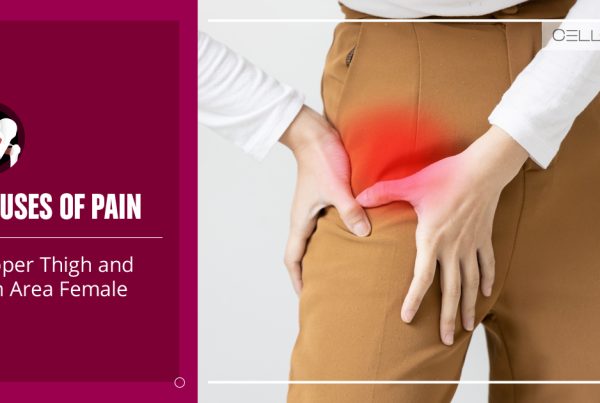Published on: April 13, 2020 | Updated on: August 29, 2024
Some injuries seem destined to result in surgery, especially injuries where the tissue is not capable of healing on its own. A labrum tear in the hip is one such injury.
If the labrum requires rebuilding or if the labral rupture/tear was caused by an underlying structural problem, surgery is typically the best option. Not all hip labral tears, however, need surgery.
Physical therapy and strengthening exercises can frequently help patients avoid surgery. Studies have indicated that when nonsurgical and surgical treatment options are examined, the outcomes are not significantly different; both therapies tend to ameliorate symptoms.
Do you have Hip Pain?
Fill out the form below to schedule your FREE virtual consultation
What Is a Labrum?
The hip joint is a ball-and-socket joint. This means that the femoral head (the top of the thigh bone) fits into the acetabulum, a concave portion of the pelvic bone. This structure allows legs to have a very wide range of motion.
The femoral head and the acetabulum are wrapped by a piece of cartilage called the labrum. The labrum serves as a cushion between the acetabulum and the femoral head, as well as allowing the joint to glide smoothly during activities.
There are many other small support structures in the hip joint such as muscles and tendons. Any of these structures are prone to injury due to the frequency that the hips are used. A common injury in the hip joint is a tear of the muscles, cartilage, or other soft tissues.
The soft tissue in a joint can tear as a result of a high-impact injury such as a car accident, or it can become worn down over time with use. This process is natural and happens to everyone, but some people may be more likely to experience it due to frequent activity or degenerative disease.
What Happens if the Labrum Tears?
A torn labrum likely occurs as a result of a separate injury or a degenerative joint disease such as arthritis. Previous or currently active adults are particularly prone to this injury.
A torn labrum diagnosis can be difficult because patients might not demonstrate signs of an injury. Anybody who suspects they have a labrum tear should consult a doctor.
Some of the common signs of a labrum tear include:
- Deep, aching pain in the groin or buttocks
- The sensation of the joint locking or clicking
- Instability
- Difficulty with certain tasks, like sitting or standing
- Inability to rest on the affected side
It is important to discuss any symptoms with a medical professional, as there are some signs that may not seem relevant but may be indicative of certain conditions. When talking to a doctor, be sure to include any and all information about an injury, including how it happened, how long it’s been causing problems, and what activities are difficult because of hip pain.
With this information, doctors will begin to diagnose the condition by using certain imaging techniques and physical exercises. The physical exercises may consist of watching the patient walk, which allows doctors to check for a limp, as well as bending the hip to see where pain strikes.
The imaging techniques they may use include MRI, X-ray, and CT scans, which provide doctors with an image of the joint. An MRI is the best imaging technique to evaluate the labrum. Looking at the image allows doctors to determine the source of pain – it can indicate if degeneration is occurring, how the bone structure is holding up, and other potential abnormalities of the joint.
Doctors may also inject a small amount of local anesthetic into the joint, which can be used as a diagnostic tool. If pain is relieved from an anesthesia injection it is indicative that the injury is occurring inside the joint, rather than somewhere outside of it.
Conventional Treatment
Unlike some other injuries to the soft tissue, a labrum tear does not heal on its own. This means that treatment consists mostly of managing symptoms. If symptoms do not go away after trying these treatments, many doctors turn to surgery to correct the damaged tissue by either removing it or other means of reparation. Some common treatments many people try before surgery are:
- Pain management: Over-the-counter anti-inflammatory drugs such as ibuprofen and naproxen can help manage pain, allowing the patient to better tolerate everyday activities that may cause pain. For debilitating or severe pain, doctors may recommend stronger medication via a prescription.
- Corticosteroid injections: A powerful anti-inflammatory injection can reduce pain significantly. For patients who are experiencing degeneration of soft tissue due to a condition like arthritis. Long term, these injections are not recommended because they can cause further damage to soft tissue over time – this is not a long-term solution!
- Physical therapy: Many patients have great success with physical therapy as a non-invasive treatment option for hip pain. Physiotherapists demonstrate targeted exercises focused on strengthening the joint and relieving pain.
If symptoms persist through these treatments, some patients opt for surgical intervention. This is typically an arthroscopic surgery. Using a tiny camera for guidance and very small instruments for reparations, surgeons are able to remove damaged tissue and/or anchor down the torn labrum.
Increasingly, patients are now seeking out alternatives to surgical interventions. This is most true in active adults in their 30s or older.
Alternative Treatments & Procedures for Hip Labrum Tears, Including Cell-Based Therapy
The field of regenerative medicine works on the body by targeting its naturally occurring regenerative cells. Two of these regenerative superstars are platelets and autologous stem cells.
Platelets are a component of the blood that contain growth factors and proteins that are an invaluable component of the body’s natural healing process. Increasing the number of such cells in an injury site, like a torn labrum, can help stimulate cartilage repair through the delivery of the 10 different growth factors.
More importantly, platelets can release a potent, long-term anti-inflammatory protein called IL-1 RA. This treatment has been shown to be an effective way to treat many soft tissue injuries.
Platelet-rich plasma (PRP) therapy begins with a blood draw. The patient’s blood is then placed in a centrifuge, which separates the power-packed platelets from other components in the blood. Once the platelets are more concentrated, they are injected into the hip, using imaging technology such as ultrasound or MRI to guide the needle to the location where it will provide the best results.
Sources
Footnotes
- Yazbek PM, Ovanessian V, Martin RL, Fukuda TY. Nonsurgical treatment of acetabular labrum tears: a case series. journal of orthopaedic & sports physical therapy. 2011;41(5):346-53.
- Theige M, David S. Nonsurgical treatment of acetabular labral tears. Journal of sport rehabilitation. 2018;27(4):380-4.
- Cianci A, Sugimoto D, Stracciolini A, Yen YM, Kocher MS, d’Hemecourt PA. Nonoperative management of labral tears of the hip in adolescent athletes: description of sports participation, interventions, comorbidity, and outcomes. Clinical journal of sport medicine. 2019;29(1):24-8.
- Edwards SL, Lee JA, Bell JE, Packer JD, Ahmad CS, Levine WN, Bigliani LU, Blaine TA. Nonoperative treatment of superior labrum anterior posterior tears: improvements in pain, function, and quality of life. The American journal of sports medicine. 2010;38(7):1456-61.
- Scott BL, Lee CS, Shi LL, Lee MJ, Athiviraham A. Nonoperative management of hip labral tears yields similar total hip arthroplasty conversion rate to arthroscopic treatment. The Journal of Arthroplasty. 2020;35(1):23-7.
- Pountos I, Panteli M, Walters G, Bush D, Giannoudis PV. Safety of epidural corticosteroid injections. Drugs in R&D. 2016;16:19-34.
- Aleksandrushkina NA, Danilova NV, Grigorieva OA, Mal’Kov PG, Popov VS, Efimenko AY, Makarevich PI. Cell sheets of mesenchymal stromal cells effectively stimulate healing of deep soft tissue defects. Bulletin of Experimental Biology and Medicine. 2019;167:159-63.
References
- Hip Labral Tear. Johns Hopkins Medicine. Accessed 2/23/2024.
- Can I Recover from a Hip Labral Tear Without Surgery? New York Bone & Joint Specialists. Accessed 2/23/2024.
- Recommended Treatments for a Hip Labral Tear. SPORTS-Health. Accessed 2/23/2024.
- Arthritis. Mayo Clinic. Accessed 2/23/2024.
CELLAXYS does not offer Stem Cell Therapy as a cure for any medical condition. No statements or treatments presented by Cellaxys have been evaluated or approved by the Food and Drug Administration (FDA). This site contains no medical advice. All statements and opinions are provided for educational and informational purposes only.
Dr Pouya Mohajer
Author
Pouya Mohajer, M.D. is the Director of Spine and Interventional Medicine for CELLAXYS: Age, Regenerative, and Interventional Medicine Centers. He has over 20 years of experience in pain management, perioperative medicine, and anesthesiology. Dr. Mohajer founded and is the Medical Director of Southern Nevada Pain Specialists and PRIMMED Clinics. He has dedicated his career to surgical innovation and scientific advancement. More about the doctor on this page.
Dr Pejman Bady
Contributor
Dr. Pejman Bady began his career over 20 years ago in Family/Emergency Medicine, working in fast-paced emergency departments in Nevada and Kansas. He has served the people of Las Vegas as a physician for over two decades. Throughout this time, he has been met with much acclaim and is now the head of Emergency Medical Services in Nye County, Nevada. More about the doctor on this page.










